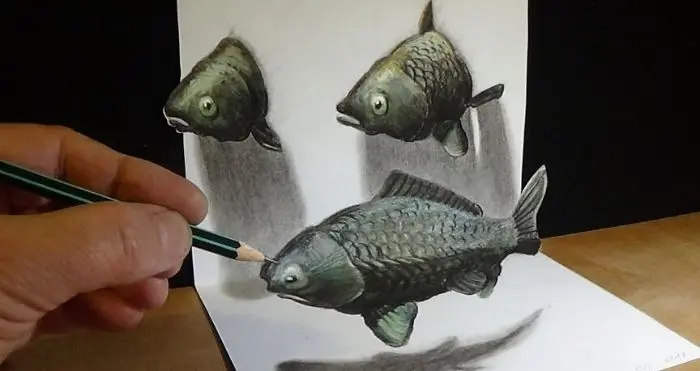Digitalization has indeed affected our lives in more ways than we could ever possibly imagine. In fact, even the art world was not able to escape its influence. Nonetheless, this doesn’t mean that traditional art has lost its spark and Hungarian artist Sandor Vamos’ stunningly deceiving 3D drawings will prove that true.
So, these days, many artists simply turn to their computers or pen tablets to render 3D artworks. However, unlike them, Vamos prefers to stick to the old-school way with his trusty art supplies. A sheet of paper, a variety of pens and pencils and a pair of scissors, that is.
https://www.instagram.com/p/BZWFWYdA9fK/?utm_source=ig_embed
https://www.instagram.com/p/BesuqlpgkW2/?utm_source=ig_embed
https://www.instagram.com/p/BdXi4IUALRN/?utm_source=ig_embed
https://www.instagram.com/p/BTJffEIBgQj/?utm_source=ig_web_copy_link
https://www.instagram.com/p/BbmmWXtgAtR/?utm_source=ig_embed
But of course, the ultimate secret behind his masterpieces is his comprehensive knowledge and understanding of angles and perspectives. In addition, understanding how light and shadow come into play is also an integral part of the process.
https://www.instagram.com/p/Bd8MgO1AyWk/
https://www.instagram.com/p/BaMT0wPgFj4/
https://www.instagram.com/p/BVIS6bxBt4I/
https://www.instagram.com/p/BU1qu-7hR8b/?utm_source=ig_embed
https://www.instagram.com/p/Bdk0-R7AphX/
Hungarian artist Sandor Vamos incorporates anamorphosis into his drawings to create 3D optical illusions
Incorporating anamorphosis into his works, Vamos can make just about any subject appear as though it has come to life. From shapes, numbers, letters and symbols, to animals, mythical creatures and even Pokémon characters. In most cases, he makes his subjects look as if they’re coming straight out of the paper. However, there are also instances when he makes them seem like they’re inwards to.
https://www.instagram.com/p/BdKtZ_IA8h1/
https://www.instagram.com/p/8ESoFrnXQc/
https://www.instagram.com/p/BWicLWZgVj8/?utm_source=ig_embed
https://www.instagram.com/p/BccpSh0gC0N/
https://www.instagram.com/p/BbIHbW1ADOY/
Anamorphic art dates back to the early 14th and 15th centuries. However, the term anamorphosis was only first used in the 17th century. It’s derived from the Greek prefix ana- which means “back” and the word morphe which means “shape.” This technique involves the use of distorted images which would appear normal only when viewed from a specific angle. Artist M.C. Escher and mathematician Roger Penrose were among the ones who popularized this method in their respective times.
https://www.instagram.com/p/BU_1_yOhYLP/
https://www.instagram.com/p/Ba9uVoKBX5h/
https://www.instagram.com/p/BYiakk5gPDa/
https://www.instagram.com/p/BX8lu0aAqV1/
https://www.instagram.com/p/Bccrtdvgf_o/?utm_source=ig_embed
So, one can only appreciate his creations by viewing them at a certain angle
Vamos also uses the same style to turn his 2D illustrations into 3D optical illusions. He first sketches his subject on paper and then applies intricate shading techniques to create the perception of depth. In some cases, he also cuts out a portion of the drawing to intensify the effect. Finally, he photographs his work from a certain angle to complete the illusion that it’s in 3D.
https://www.instagram.com/p/BY0YT1YArUp/
https://www.instagram.com/p/BQGOa6KjaQI/
https://www.instagram.com/p/BKatvINhSL_/
https://www.instagram.com/p/BJdJDXZBxpN/
https://www.instagram.com/p/BaPVgQ7A7kd/
https://www.instagram.com/p/4EZkpynXdi/
https://www.instagram.com/p/BdqOI6XAKKh/
https://www.instagram.com/p/BNR00TmhrsP/
So, the talented artist documents his creative process on his YouTube channel. He also shares various tutorials and time-lapse videos of his amazing works there. You may also follow him on Instagram to see more of his recent works.
Watch these videos to find out the secret behind these stunningly deceiving illustrations
Source: Sandor Vamos Facebook | Instagram | YouTube | DeviantArt

